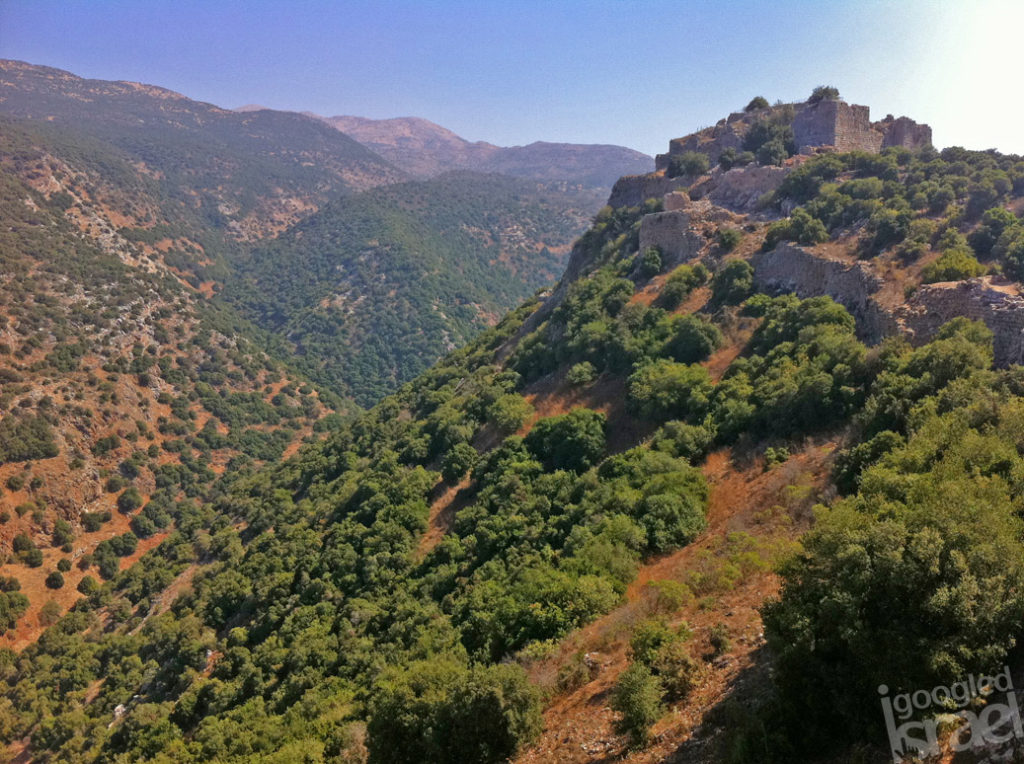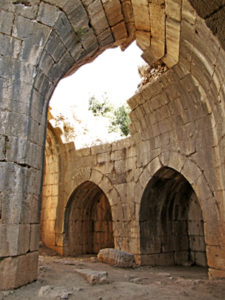
Nimrod Fortress (known as Qala’at al-Subeiba in Arabic) means ‘Castle of the Large Cliff’, a fitting name for this jaw-dropping medieval fortress located in the northern part of the Golan Heights. Surely one of Israel’s hidden gems, a little off the tourist track but well worth a visit!
This impressive site is positioned on an expansive ridge that rises a staggering 800 meters (2,600 feet) above sea level. Situated on the slopes of Mount Hermon above the Banias Spring, the fortress once offered a strategic location during its heyday (some 800 years ago) and now offers its visitors some of the most panoramic and breathtaking views in the area.
With a long history dating back to around 1229, the fortress was initially built by Al-Aziz Uthman to prevent additional attempts to take Damascus. Subsequently, the fortress has seen much expansion, transforming it from its comparatively simple roots into a much more sophisticated fortress complex. The fortress was also extended from its original size to encompass the whole ridge whilst later development saw the fortress strengthened substantially.
In the 13th century the fortress fell into disrepair after the Muslim conquest of Akko (don’t miss our guide to Akko…). At that point the fortress lost its strategic value and was subject to many subsequent uses, including serving as a luxury prison for Ottoman nobles and even as pasture and home lands for local shepherds and their flocks. But the most significant hit on the fortress came in the 18th century when it was devastated by an earthquake.
 Today, after much excavation and restoration work, visitors can explore the remains of the whole fortress. The complex includes many secret corridors, a highlight for any visitor, as well as winding staircases, underground water cisterns and those special castle windows which are narrow on the outside and wide inside, known as loopholes. The remains of the Keep are also visible and are surrounded by large towers whilst the oldest part of the castle, a fortress within a fortress complete with its own moat and drawbridge, also remains.
Today, after much excavation and restoration work, visitors can explore the remains of the whole fortress. The complex includes many secret corridors, a highlight for any visitor, as well as winding staircases, underground water cisterns and those special castle windows which are narrow on the outside and wide inside, known as loopholes. The remains of the Keep are also visible and are surrounded by large towers whilst the oldest part of the castle, a fortress within a fortress complete with its own moat and drawbridge, also remains.
One of the most impressive sights within the fortress is situated near the entrance. Behind the monumental gate sits the giant lintel which is adorned with an impressive sized inscription referencing the Beibars’ 1275 construction of the fortress. Also dating from the Beibar time is a stone carved panther, the Beibar’s Heraldic symbol, which was discovered as recently as 1998.
Beyond the fortress lies one of the most magnificent delights – the stunning views afforded visitors from every aspect. This wonderful lookout offers views of beautifully forested valleys and impressive vistas over the Golan Heights into the deep narrow valley that separates Mount Hermon from the remainder of the Heights. The fortress also looks out over the plains of the Upper Galilee, across to the hills bordering Lebanon.
Be sure to stay and take in one of the magnificent sunsets. When night falls, the fortress is illuminated upon the ridge, and these impressive ruins are highlighted in all their glory.
A guided tour of the fortress is available and lasts around 2 hours. Our recommendation: not for small kids or the agility challenged, as there are a few winding staircases that are a little more tricky to navigate.
Opening hours: April to September – 8am to 5pm, October to March – 8am to 4pm.
Entrance fee: Adults: 21 shekels, Children: 9 shekels. Senior Citizens and groups get a discount.
How to get there: The easiest way to get to Nimrod Fortress is from Kiryat Shmona. Head out of Kiryat Shmona on road 99 towards Mount Hermon, and continue on 989; you should arrive within 30 minutes.

